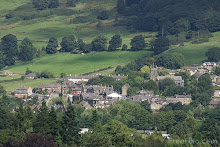Tonight is my last night here. I have been three months in the monastery, teaching at the school and meeting local monks and lay people. A few good people have become friends. The school children captured my heart with their sincerity and honesty, a raw quality that I hope I can carry with me when I leave.

I spend the evening in one
Geshe's home inside the monastery complex. We were three in total -
Geshe la,
Ani Rinzin and me. A '
Geshe' is a monk who has trained for years and passed his
Geshe exams; it is like attaining a doctorate in
Philosophy and takes 12 or more years to achieve. After this the
Geshe can take in students of his own and guide them through their steps. The word 'la' is respect word that is added to the end of a name. An '
Ani' is a nun, and
Ani Rinzin is a nun from Taiwan who takes a room in the Guest House where I am staying. Our conversations switch between English, Tibetan and Chinese.
Geshe la and
Ani are able to use all three. I feel quite lazy with my English, and only a smattering of Tibetan.
We eat potato
momo and drink mushroom and egg soup.
Geshe's small home is on the edge of the ever-expanding monastic complex and is home to the
Geshe and his three students. It was sponsored by one
Ani from Scotland who has been visiting this place for 12 years and spends much of her time here. While we are talking (or more
precisely Geshe la and
Ani Rinzin are talking through a problem
Ani Rinzin has) one of the students arrives home. I would estimate this young monk to be around his very early twenties, and he speaks good English as we talk about the
Ani in Scotland.
'When I miss her I give her a missed call,' he tells me, 'and she calls me back. I tell her "
Ani la, you are like my second mother", and she tells me "You are like my son". When she leaves I feel an emptiness inside without her. I cannot carry that feeling,' he tells me.
His face is young and honest. 'This is attachment,' I reply, looking at this monk who so obviously cares for his Scottish
Ani like a son cares for his mother.
'
Mmmm. Yes,' he agrees, 'attachment.'

Attachment is
something that is much talked about in Buddhism, and generally it is not seen as a positive thing; but it is natural, and this young man is acknowledging the reality of his feelings.
I think of the school students that I am leaving behind and of how much I will miss them and this place. This too is attachment, and there will be an emptiness inside me when I go. It will be a difficult feeling, and I wonder how well I will carry it.


















